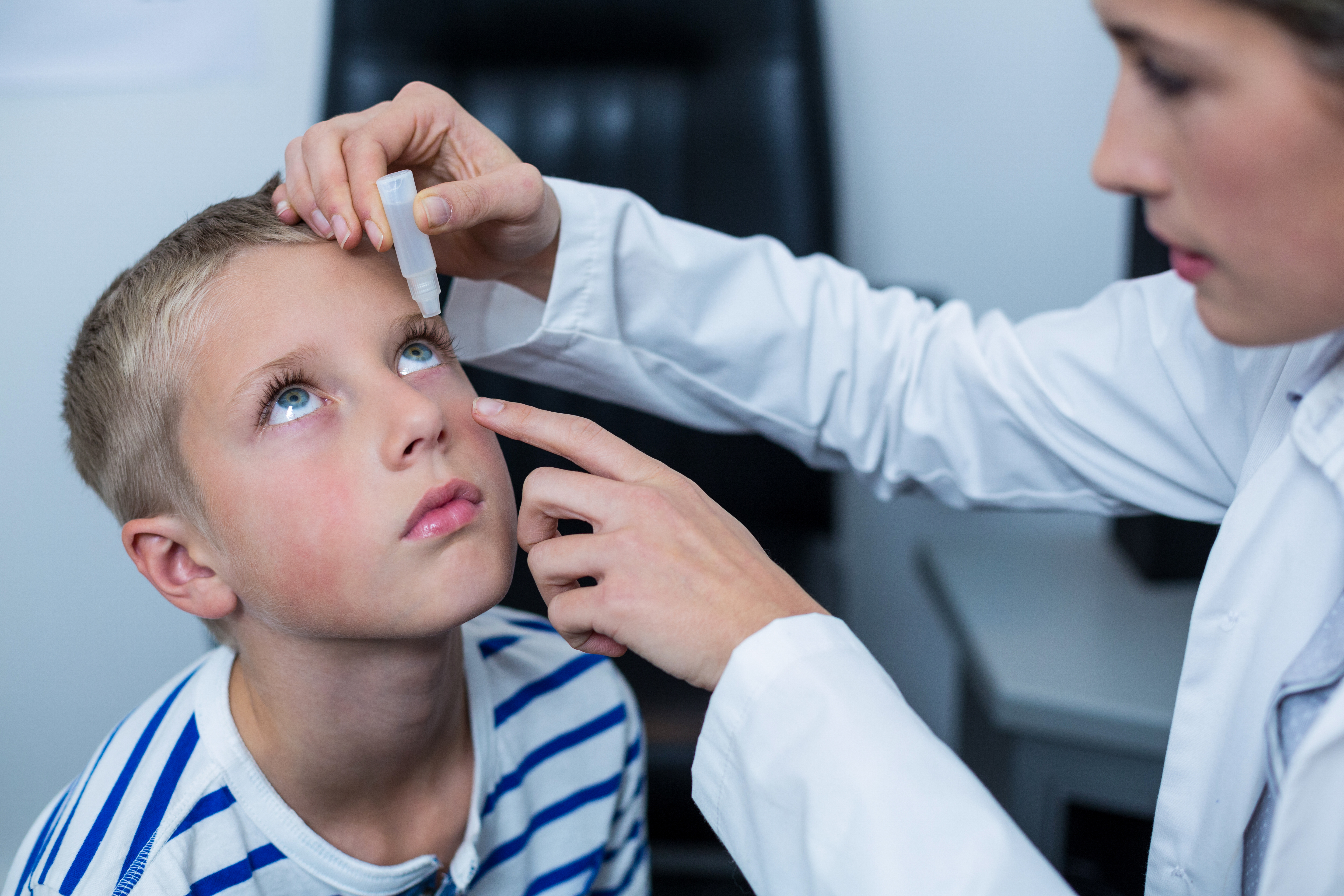 |
| Favorable phase III data on low-dose atropine could lead to the first FDA approval of a pharmacologic treatment option for myopia in young children. Photo: Getty Images. |
Does low-dose atropine in concentrations of 0.01% and/or 0.02% slow the progression of myopia? That was the question posed in a phase III clinical trial of NVK002 (Vyluma), for treating childhood myopia progression. Researchers assessed safety and efficacy and found that both, but the 0.01% in particular, slowed progression.
The trial took place over three years with placebo vs. low-dose atropine 0.01% and 0.02% studied. Participants were recruited from 26 clinical sites in North America and five countries in Europe. Enrolled participants were three to 16 years old with -0.5D to -6D spherical equivalent refractive error (SER) and no worse than -1.50D astigmatism.
A total of 576 participants were randomly assigned to treatment groups. Of these, 573 participants received trial treatment and were included in the safety set. The 489 participants (84.9%) who were six to 10 years old at randomization made up the modified intention-to-treat set.
Results demonstrated that atropine 0.01% slows myopia progression among participants six to 10 years old. This dose significantly increased the proportion of eyes with less than -0.5D myopia progression after three years of treatment. This concentration also reduced both SER progression and axial elongation vs. placebo over the same period. A smaller treatment effect was observed for atropine 0.02%.
To further understand the results of atropine 0.02%, another post-hoc analysis was conducted, which excluded the data after treatment cessation for participants who discontinued trial medication but stayed in the trial through month 36 and switched to other myopia therapies (i.e., orthokeratology, multifocal contact lenses or compounded atropine). Results showed an increased difference between atropine 0.02% and placebo in the proportion of responders and in the mean difference of SER change from baseline.
“There was a clear confounding effect due to the inclusion of the data from these participants […] after they stopped trial medication and went on to other treatments, which likely contributed to the atropine 0.02% results as reported,” the authors explained in their paper on the study for JAMA Ophthalmology. “In evaluating our results, a higher-than-expected placebo responder rate was observed (17% vs. the assumed 7% in the protocol). However, on review of more recently available data, the observed placebo myopia progression rate appears within the range of the progression rate observed in control arms of other myopia therapy studies.
“From a risk/benefit perspective, the efficacy and safety observed suggests that low-dose atropine may provide a treatment option for children ages three to 17 years with myopia progression, which may lead to less frequent or delayed change in glasses, progression to less severe correction and potentially reduce long-term sequelae, which could lead to vision loss later in life, such as myopic maculopathy,” the authors concluded.
Zadnik K, Schulman E, Flitcroft I, et al. Efficacy and safety of 0.01% and 0.02% atropine for the treatment of pediatric myopia progression over three years. JAMA Ophthalmol. June 1, 2023. [Epub ahead of print]. |

